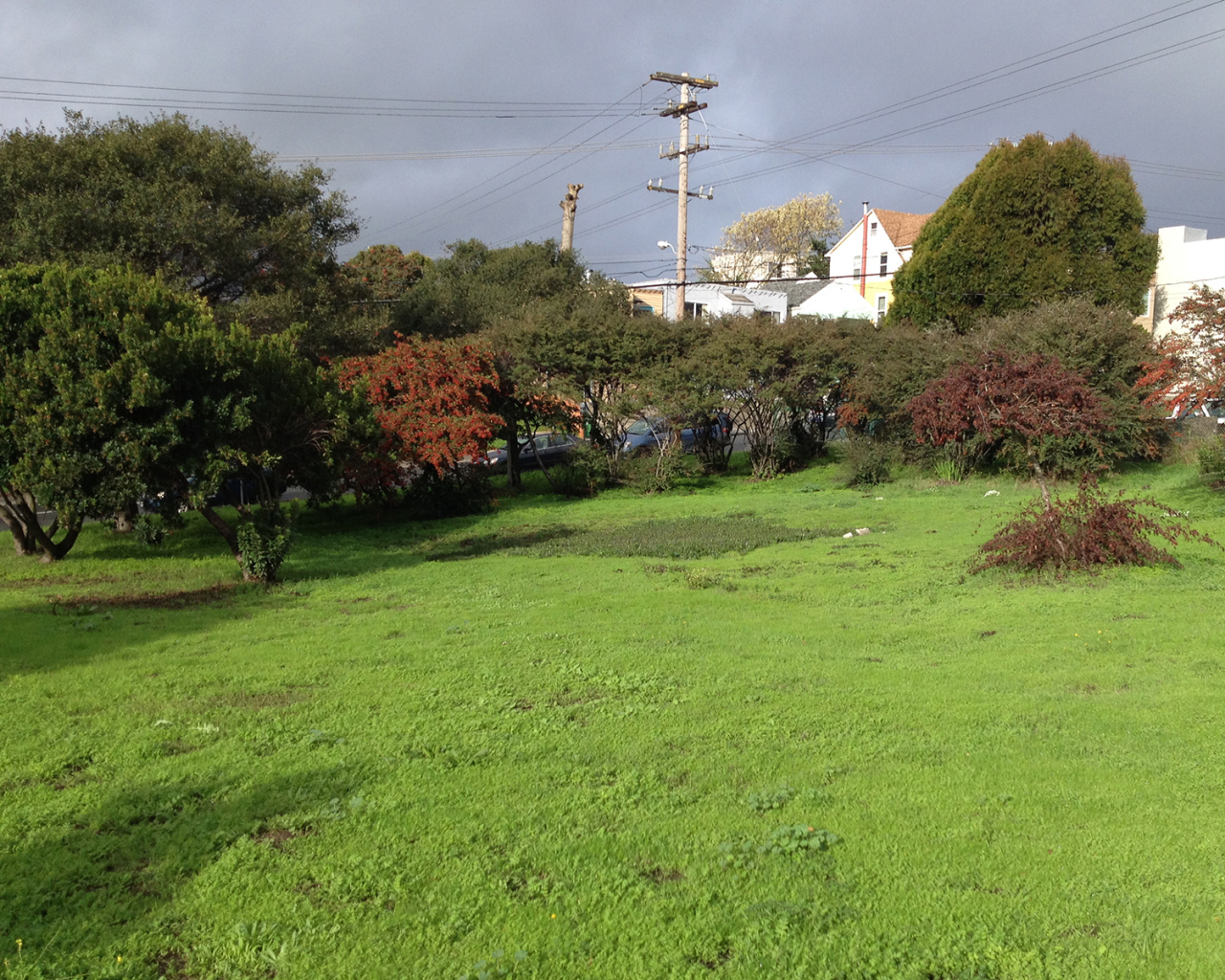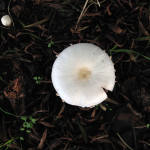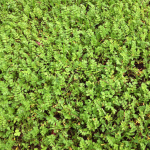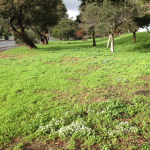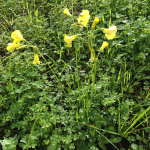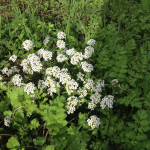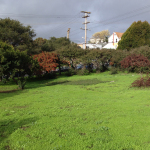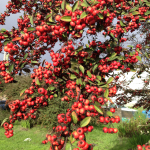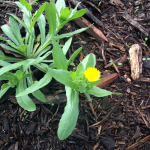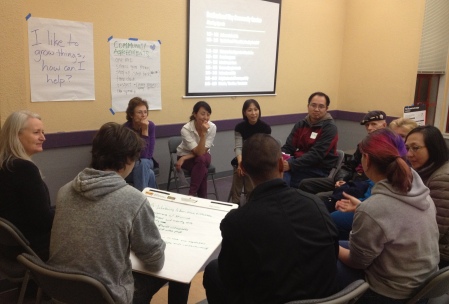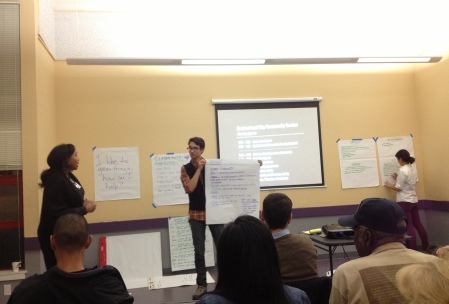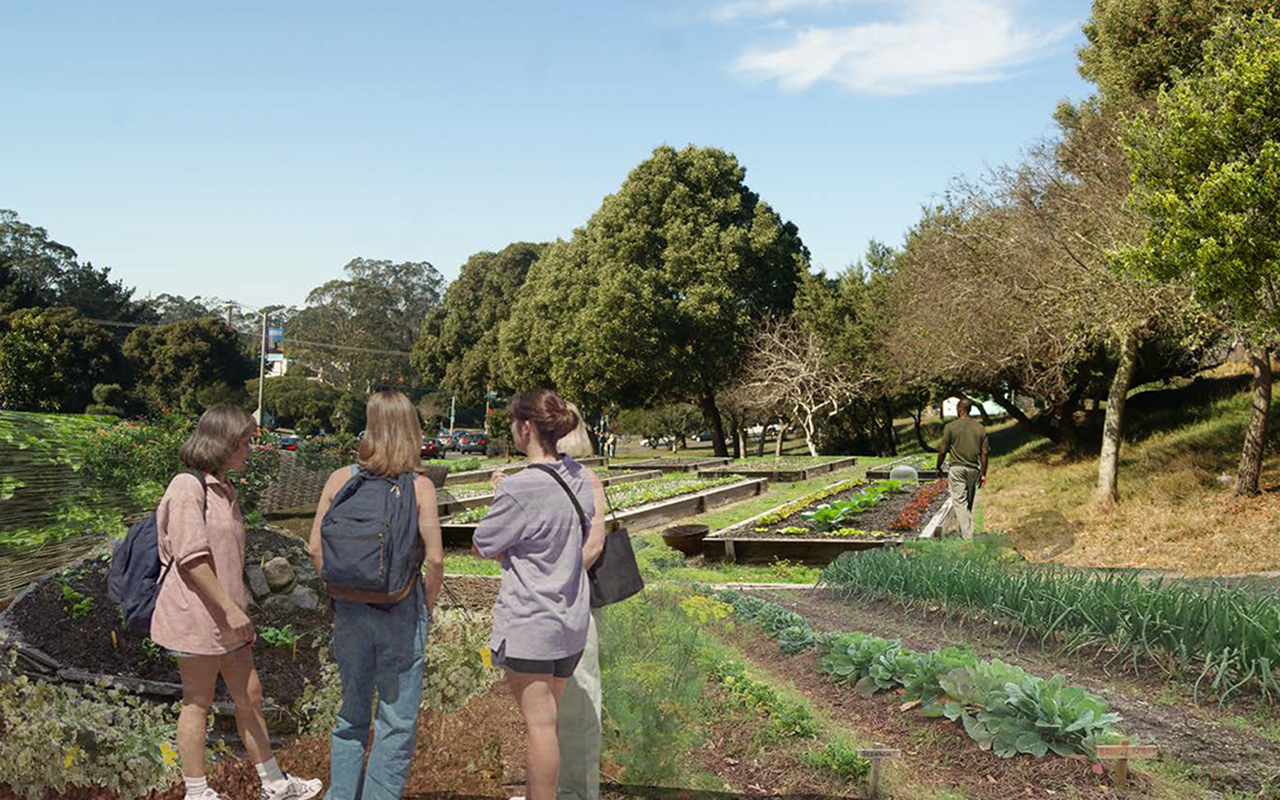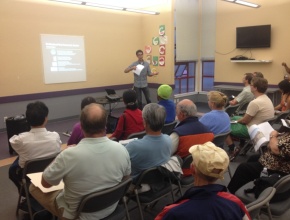
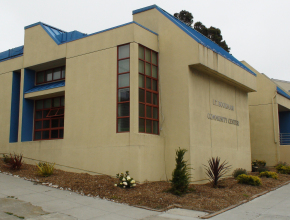
September 17, 2014 – The first Brotherhood Way Community Garden meeting was held at the I.T. Bookman Community Center and attended by approximately 70 members of the community. The goal of the meeting was to gauge community interest and capacity to support the development of the project, identify key community members to serve as champions for the project, and to introduce attendees to different forms of community gardens that exist in San Francisco.
The meeting started with a welcome from District 11 Supervisor John Avalos and followed up with presentations by representatives from Public Works and the Parks and Recreation Department. Jerad Weiner, Community Liaison from Public Works, provided background on the project and an overview of potential next steps for the project. Hannah Shulman, Urban Agriculture Program Coordinator, presented on the various types of community gardens within San Francisco and discussed their advantages and challenges. Download a copy of the presentations here. Anne Brask, a student at the Urban Permaculture Institute, presented their designs for the community garden at Brotherhood Way that was created as a capstone project. This presentation allowed participants to visualize some potential directions that the community garden could take. Download a copy of the Urban Permaculture Institute design presentation here.
The meeting concluded with an exercise where participants could provide their reactions, suggestions, and feedback to various images of community gardens that were posted around the room.
Here are the images that were included with the exercise along with the comments left by the meeting participants.

🙂
Love it! Really enjoy the asymmetry
Love this!
How will the distribution of fruit from edible arboretum work?
There should be a central open space for gatherings…
Maybe more box gardens
Absolutely opposed to the garden extending all the way to the walkway, …garden should be setback from the sidewalk.
Are these spaces edible or decorative? How about “natural combination” of edible and decorative plants together.
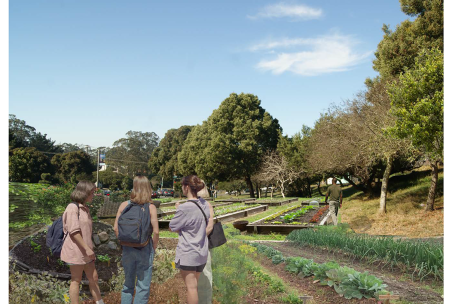
This design is open, very creative, instead of using mulch use small rocks to walk on. Also keep in mind accessibility.
Love the open growing spaces
Should be fencing that defines the area, design has potential
Nice! Open feel!
This is my favorite combination of plots and rows. Urban people don’t know how food grows. This educates other by gardening by example.
More space, good!
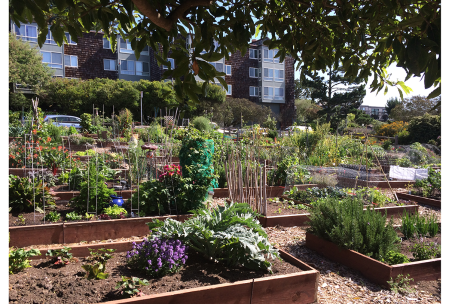
Best, like individual plots.
No animals in garden
Like it, encourages individuals and families to use a reasonably sized plot
This is fantastic to inspire individuals buy-in. People are more likely to participate regularly if they have their “own” space.
Like individuals plots so gardeners can have ownership, but lacks communal space.
Like the idea of communal fruit tree and herbal garden areas.
Boxes are too restrictive in the long run, please have more planting strips.
Like the boxes, more organized.
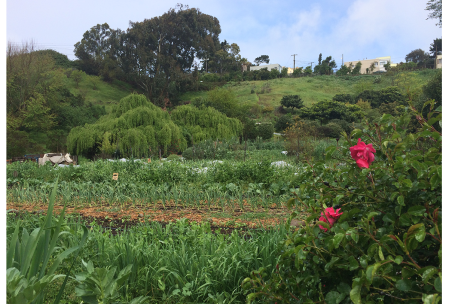
This is good for biodiversity and environment. Good for birds and beneficial insects.
I like the wilderness feel for this garden, inviting.
Dislike the traditional farm look, but like the wild areas.
These large growing areas are very desirable, makes for more efficient food production.
Prefer fenced in plots, more manageable.
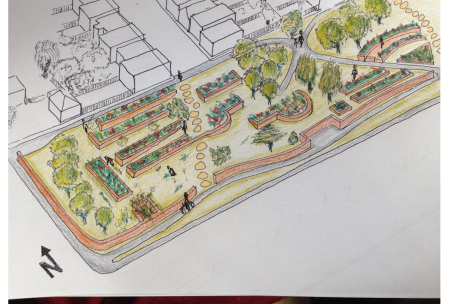
Like it! Might be nice to have small tiered area against the hillside with seating facing a small stage or open area for music, theater, classes.
Looks like “community”, but looks like it needs a lot of maintenance.
This is a good design, should be moved back from sidewalk and street.
I like the idea of keeping the trees. Will this open garden design lead to vandalism and destruction against the garden?
Very nice urban element with the combination of organic plots.
Other Ideas and Concerns
Encourage California natives and drought tolerant plants would be best because of the water shortage.
Fence needed to protect the garden that allow police to see inside the garden.
Include a tool lending library
Plan for gophers in the design, lay down chicken wire to protect beds.
Will the traffic along Brotherhood Way affect the safety of the food?
Utilize a fog catcher to bring in water, include rain barrels and other methods for recycling water.
Compost boxes, vermicompost, and soil amendments.
Communal areas for education, demonstration; communal arbor, decorative flower, and herb sections.
Project should start small with one block, them move to the other blocks as demand and support grows.
Facilities for families and seniors, accessible paths, benches, bicycle racks.
